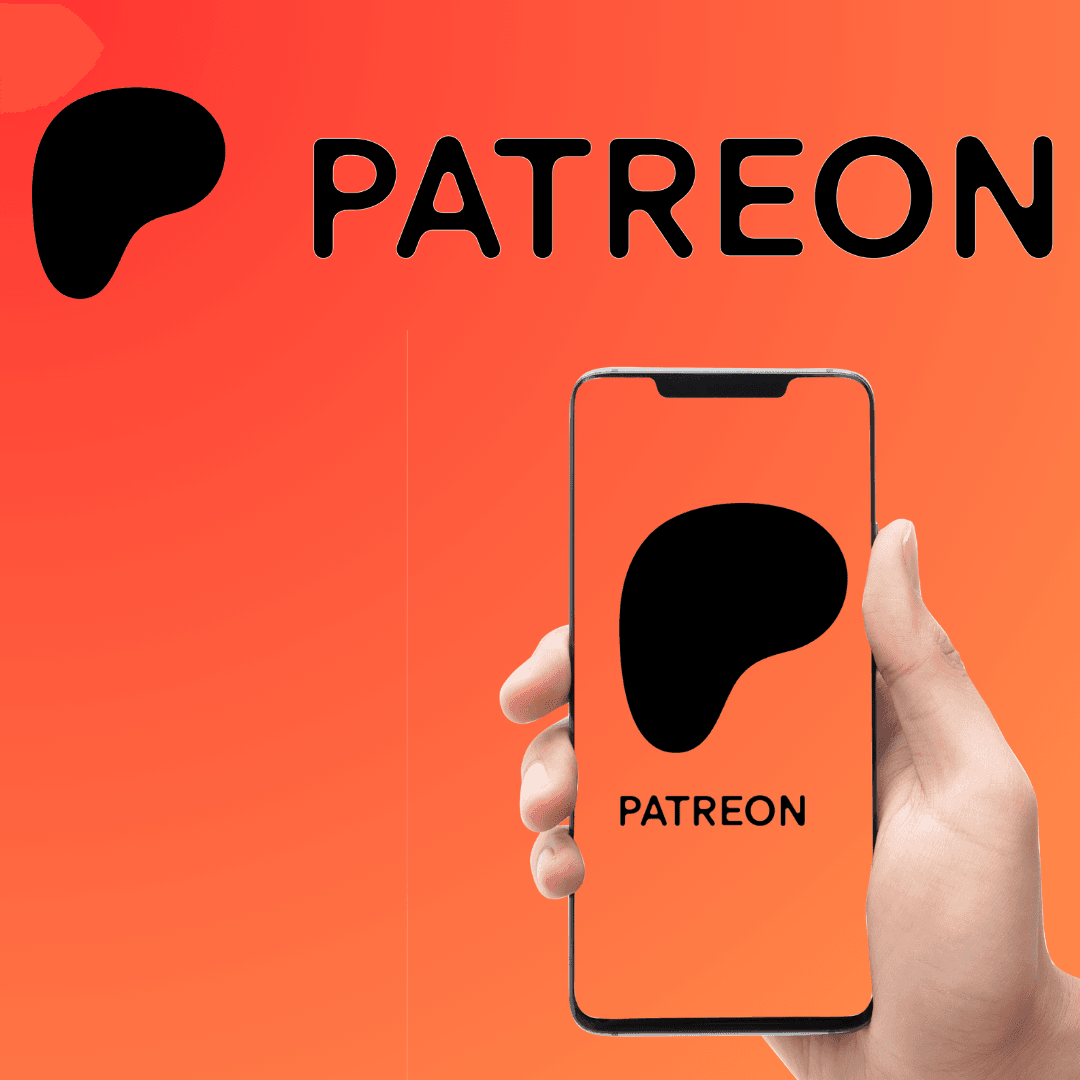Is Patreon Like OnlyFans? Discover the Key Differences for Creators
Many content creators looking to monetize their work wonder if Patreon and OnlyFans are the same. While both platforms offer paid subscriptions, they cater to different audiences and goals.
Patreon is built for artists, musicians, and educators who want steady, long-term support, while OnlyFans thrives on direct, pay-per-content interactions, often in the adult content industry but expanding into fitness, beauty, and coaching. This article breaks down their differences in audience, monetization, content policies, engagement, and earnings potential to help you decide which platform fits your needs.
Key Takeaways
Patreon is built for long-term creative projects, while OnlyFans focuses on instant monetization through direct engagement—choosing the right platform depends on your content style and audience.
Patreon’s membership tiers provide stable, recurring income, whereas OnlyFans offers higher earning potential but requires constant interaction to sustain revenue.
Community engagement differs—Patreon builds loyalty through exclusive content, while OnlyFans relies on personal, transactional relationships with subscribers.
How Patreon and OnlyFans Work

At first glance, Patreon and OnlyFans might seem similar since both allow creators to monetize content through subscriptions. However, their business models, audience interactions, and monetization strategies are quite different.
Patreon’s Core Model
Patreon is designed for community-driven creators who want consistent, long-term support from their audience. This includes musicians, writers, artists, podcasters, and educators. Instead of one-time purchases, Patreon operates on a tiered membership system, where subscribers pay a monthly subscription fee to access exclusive content. Creators can create subscription tiers to offer different levels of benefits, such as early access, behind-the-scenes content, or special shoutouts. This structured approach helps Patreon users build a loyal fanbase and sustain a steady income over time.
OnlyFans’ Core Model
OnlyFans operates differently by emphasizing direct creator-to-fan interactions. Unlike Patreon, where community engagement is spread out over time, OnlyFans is built on instant transactions. Fans subscribe to a creator’s page and pay for additional content, including pay-per-view posts, private messages, and custom requests. This setup allows creators to make money quickly, but it also demands more constant engagement to maintain earnings.
While OnlyFans initially gained popularity as an adult creator platform, it has expanded to include fitness trainers, beauty influencers, and lifestyle coaches. However, its reputation is still largely tied to the adult content category, which can influence audience expectations.
Key Distinction
Patreon is ideal for creators who want long-term financial stability and community engagement, while OnlyFans is better suited for creators seeking immediate, transactional monetization through personal interactions. The choice depends on a creator’s content style, audience, and income goals.
Monetization: How Creators Make Money

Both Patreon and OnlyFans give creators a way to earn money directly from their audience, but their monetization models work in different ways. Patreon focuses on long-term membership subscriptions, while OnlyFans is built on instant transactions and upsells.
Patreon’s Monetization Model
Patreon allows creators to earn through tiered memberships, where fans subscribe at different price points to access exclusive content. The platform supports:
Subscription tiers: Creators set different levels (e.g., $3, $10, $25) with increasing perks.
Per-project payments: Instead of monthly memberships, some creators charge per creation (e.g., per song, per artwork).
Predictable earnings: Because fans commit to ongoing support, Patreon provides steady and reliable income, even if growth is slow.
Average subscription fees: Many creators price their memberships between $3 to $10 per month, making it affordable for fans while ensuring consistent revenue.
This model works best for creators producing content over time—musicians, educators, and artists who release exclusive work regularly.
OnlyFans’ Monetization Model
OnlyFans operates on a base subscription with upsells, meaning creators earn not just from monthly fees but also from direct sales. Revenue streams include:
Subscription fees: Fans pay a fixed monthly price to access a creator’s content.
Pay-per-view content: Creators can charge additional fees for exclusive posts or videos.
Custom requests & direct messages: Fans pay extra for personalized content.
Tipping system: Subscribers can send tips at any time.
While OnlyFans creators can earn large amounts quickly, this model requires constant interaction to keep fans engaged and paying.
Which Is More Lucrative?
Patreon → More stable and predictable, great for long-term financial planning.
OnlyFans → Higher earning potential, but income fluctuates based on engagement.
Best choice? It depends on how a creator prefers to earn—steady support or fast, high-volume payments.
Audience & Creator Types: Who Thrives on Each Platform?

While both Patreon and OnlyFans allow creators to monetize their content, the type of audience they attract and the kind of creators who succeed on each platform are quite different.
Patreon’s Typical Audience
Patreon is home to fans who want ongoing, meaningful engagement with their favorite creators. The platform attracts:
Supporters of educational content, podcasts, and long-form projects—people who appreciate in-depth storytelling, teaching, or artistic work.
Fans of musicians, authors, and artists—Patreon allows them to support creative projects they enjoy while getting access to exclusive content and community perks.
Loyal subscribers who are invested in a creator’s long-term success, rather than one-time interactions.
This makes Patreon ideal for creators who produce content consistently and build a lasting audience, like educators, indie game developers, or visual artists.
OnlyFans’ Typical Audience
OnlyFans is built around individual-based, personal interactions, making it more transactional than Patreon. The audience typically includes:
Fans looking for direct creator access—whether through private messages, custom content, or live interactions.
Subscribers of influencers in fitness, beauty, lifestyle, and coaching—as well as its well-known adult content fanbase.
Users willing to pay extra for exclusive or personalized content, rather than long-term community-based support.
Who Should Use Which?
Patreon → Best for artists, writers, podcasters, educators, and anyone building a community-focused audience over time.
OnlyFans → Ideal for models, influencers, fitness trainers, and creators who thrive on personalized engagement and exclusive content sales.
The right choice depends on how a creator wants to interact with their audience and how they prefer to monetize their work.
Content Guidelines & Restrictions

Patreon and OnlyFans differ significantly in content moderation and what creators can monetize. Patreon enforces strict content policies, making it a better fit for family-friendly or educational creators, while OnlyFans provides more flexibility, particularly for those producing explicit adult content. These rules impact visibility, monetization, and audience expectations.
Patreon’s Strict Policies
Patreon is not adult-content friendly and enforces strict content policies. While some NSFW content, like artistic nudity, is allowed, it must be restricted to paying subscribers only. Anything sexually explicit is strictly prohibited, and creators must carefully follow platform rules to avoid content removal or even account bans. Beyond adult content, Patreon also monitors violent, graphic, or controversial material, making it a better fit for creators producing family-friendly or educational content.
Because of these guidelines, creators working in suggestive or boundary-pushing content (e.g., provocative photography or edgy art) often struggle with visibility. Even if the content isn’t explicit, Patreon’s moderation may limit exposure, making monetization harder for those in gray-area niches.
OnlyFans’ Flexible Approach
OnlyFans, on the other hand, takes a much more relaxed stance on content restrictions. The platform allows everything from fitness coaching and lifestyle content to explicit adult material, as long as it meets legal and verification requirements. This gives creators more freedom to monetize a wide range of content types, especially in categories that wouldn’t be permitted on Patreon.
For creators who want complete control over their content and monetization, OnlyFans is often the safer choice. However, its association with adult content can shape audience expectations, which might not align with every creator’s goals.
Ultimately, content restrictions can determine where a creator’s work will thrive. If the goal is to build a long-term, community-driven brand, Patreon offers a safer and more stable environment. But for those who want fewer limitations on content type and direct earnings potential, OnlyFans provides a more open and flexible option.
Community Engagement & Fan Interaction

A key difference between Patreon and OnlyFans is how creators interact with their audience. While both platforms allow fans to support creators, the depth and nature of engagement vary significantly.
Patreon’s Community-Driven Approach
Patreon is designed for long-term audience connection, making it a great platform for creators who want to build a loyal fanbase over time. Instead of one-off interactions, Patreon fosters community engagement through exclusive content, direct messaging, and private groups. Many creators use features like behind-the-scenes updates, early access to content, and discussion forums to keep fans engaged.
Since Patreon subscribers typically commit to ongoing support, they tend to be deeply invested in the creator’s work. This setup benefits artists, podcasters, and educators who thrive on sustained engagement rather than immediate transactions. However, it lacks real-time interactions, making it less personal than other platforms.
OnlyFans’ Direct Interaction Model
OnlyFans takes a transactional, high-engagement approach, where fans pay not just for content but for direct access to the creator. Features like one-on-one messaging, custom content requests, and live streaming allow creators to monetize personal interactions. The ability to charge for messages and private videos makes engagement more immediate and financially rewarding, but it also requires constant interaction to maintain earnings.
Which Works Best for Creators?
For those who want a stable, community-based following, Patreon offers loyalty and long-term engagement. On the other hand, OnlyFans is better for creators who thrive on direct, personalized interactions, though it demands consistent effort to keep fans engaged and paying. The best choice depends on how much time a creator wants to invest in ongoing communication with their audience.
Fees & Payment Processing

One of the most important factors in choosing a platform is how much of your earnings you actually get to keep and how often you get paid. Both Patreon and OnlyFans take a percentage of creator earnings, but the fee structures and payment schedules are quite different.
How Much Do Patreon & OnlyFans Take?
Patreon operates on a tiered fee system, taking between 5% and 12% of a creator’s earnings, depending on the subscription plan. Lower-tier plans offer fewer features but take a smaller cut, while higher-tier plans include advanced tools for community engagement but come with higher fees.
OnlyFans, on the other hand, takes a flat 20% cut of all earnings, including subscriptions, pay-per-view content, and tips. While this is higher than Patreon’s fees, creators can earn large amounts quickly through premium content and personalized interactions.
Payment Processing & Frequency
Patreon pays creators monthly, with payouts processed through PayPal, Stripe, or direct deposit. This schedule ensures consistent income, making it a reliable choice for creators who want stable, recurring revenue.
OnlyFans pays weekly, which means faster cash flow but also more income fluctuations. Since OnlyFans earnings depend on constant audience engagement, creators may see large spikes or drops in income depending on activity levels.
Best Choice for Maximizing Profits?
For creators prioritizing long-term financial stability, Patreon is the better option. Those who prefer immediate, high-earning potential, even with higher fees, may find OnlyFans more lucrative—as long as they can maintain a steady stream of content and engagement.
Growing an Audience: Promotion & Marketing Strategies

Both Patreon and OnlyFans rely on social media platforms to attract new subscribers. However, their marketing strategies and audience retention methods differ significantly.
How to Market a Patreon Page
Patreon works best when creators engage their audience outside the platform. Since there’s no built-in discovery feature, success depends on driving traffic from social media, newsletters, and other platforms.
Creators often use free content previews to entice potential subscribers, offering perks like early access, exclusive behind-the-scenes content, or bonus material for paying members. Another effective strategy is tiered rewards, where fans are encouraged to upgrade their memberships by unlocking special benefits.
Collaborating with other Patreon creators also helps boost visibility, as cross-promotions introduce creators to new audiences without relying on ads or algorithms.
How to Market an OnlyFans Page
OnlyFans relies heavily on social media promotion, particularly on Instagram, Twitter, and Reddit, where creators can post teasers to attract subscribers. The platform allows discounted subscriptions and free trials, making it easier to convert casual viewers into paying customers.
Unlike Patreon, where audience-building is gradual, OnlyFans can experience rapid spikes in subscribers when a creator’s content goes viral. However, retaining fans is more challenging, as subscribers often join for short-term access rather than long-term support.
Which Platform Grows Faster?
OnlyFans tends to grow faster due to viral potential, but its fans are less loyal over time. Patreon builds a steadier, more engaged community, making it a better choice for creators focused on long-term audience retention rather than quick spikes in income.
Choosing the Right Platform for Your Goals

Deciding between Patreon and OnlyFans depends on your content type, audience, and preferred income model. While both platforms allow creators to earn through subscriptions, they cater to different creator needs and engagement styles.
Which Platform Is Best for You?
Patreon is ideal for creators who want to build a long-term fanbase and earn through consistent, recurring payments. If you’re an artist, writer, podcaster, or educator looking for sustainable income, Patreon provides a stable structure where subscribers support your work over time.
OnlyFans, on the other hand, is a better fit for creators who prefer direct engagement and immediate monetization. It works well for influencers, fitness trainers, models, and adult content creators who thrive on one-on-one interactions and personalized content sales. Because OnlyFans allows pay-per-view content and tipping, it offers higher earning potential in a short time—but also requires constant activity to maintain income.
Key Factors to Consider Before Choosing
Your content type → Patreon works well for educational and creative projects, while OnlyFans is suited for personalized and interactive content.
Your audience’s willingness to pay → Patreon relies on loyal subscribers who commit to ongoing payments, while OnlyFans attracts short-term, high-paying customers.
How much direct engagement you want → If you prefer passive, long-term earnings, Patreon is the better fit. If you enjoy real-time interaction and frequent fan communication, OnlyFans offers more opportunities for personal engagement.
The best choice depends on how you want to grow, engage, and monetize your audience over time.
Top Alternatives to Patreon & OnlyFans

If neither Patreon nor OnlyFans aligns with your content style or monetization goals, several alternative platforms offer different earning models, audience engagement strategies, and payout structures. Whether you’re looking for lower fees, better community-building tools, or more content flexibility, these options may be a better fit.
FanCentro: Best for Adult Content Creators
FanCentro is a subscription-based platform similar to OnlyFans but specifically tailored for adult content creators. It allows users to monetize private social media accounts and premium content, offering more flexibility in engagement while maintaining full ownership of their work.
LoyalFans: Lower Fees & Bi-Weekly Payouts
LoyalFans operates like OnlyFans but with lower fees and bi-weekly payouts, making it appealing for creators who want more consistent cash flow. It also includes interactive features like voice and video messages, giving fans a more personal experience.
Mighty Networks: Best for Community Building
For creators who prioritize community engagement over pay-per-view content, Mighty Networks provides a membership-based platform similar to Patreon but with built-in networking features. It’s ideal for educators, business coaches, and niche communities looking for long-term audience retention.
My.Club: Subscription + Direct Payment Hybrid
My.Club combines the subscription model of Patreon with the pay-per-content flexibility of OnlyFans. Creators can sell exclusive content, interact with fans, and offer premium services, making it a versatile choice for those who want multiple revenue streams.
Which One Should You Consider?
If Patreon’s community model feels too slow or OnlyFans’ engagement demands seem overwhelming, these alternatives provide varied monetization strategies. The right choice depends on your content type, audience, and how frequently you want to interact with paying subscribers.
Final Thoughts
OnlyFan and Patreon may seem similar at first glance, but they serve different purposes. Patreon is built for creators who want consistent, long-term support, while OnlyFans thrives on instant, high-engagement monetization. The choice ultimately depends on the kind of content being produced, the level of audience interaction expected, and the preferred income model.
For those who value stability and slow, steady growth, Patreon offers a solid foundation for building a community. OnlyFans, on the other hand, is more suited for creators who can maintain regular engagement and want to monetize directly through personalized interactions.
No single platform is perfect for everyone. Some creators might benefit from testing multiple platforms to see where they connect best with their audience. Understanding the strengths and limitations of each option is the key to choosing the right path and maximizing success as a creator.
Frequently Asked Questions

What’s the biggest difference between Patreon and OnlyFans?
Patreon is designed for long-term, community-driven support, while OnlyFans focuses on direct, transactional interactions with fans. The right choice depends on how a creator wants to engage and earn.
Can you make more money on OnlyFans than Patreon?
OnlyFans has higher earning potential due to pay-per-view content and tipping, but income depends on constant engagement. Patreon offers more stable, predictable revenue through recurring subscriptions.
Does OnlyFans allow non-adult content?
Yes, OnlyFans supports fitness, beauty, coaching, and other industries, but its reputation is still closely tied to adult content, which can shape audience expectations.
Which platform is better for passive income?
Patreon is better for passive, long-term earnings, as subscribers pay monthly for exclusive content. OnlyFans requires ongoing personal engagement to maintain revenue.
Can creators use both Patreon and OnlyFans?
Absolutely. Some creators use Patreon for stable income while leveraging OnlyFans for exclusive content sales, maximizing both platforms' strengths.

